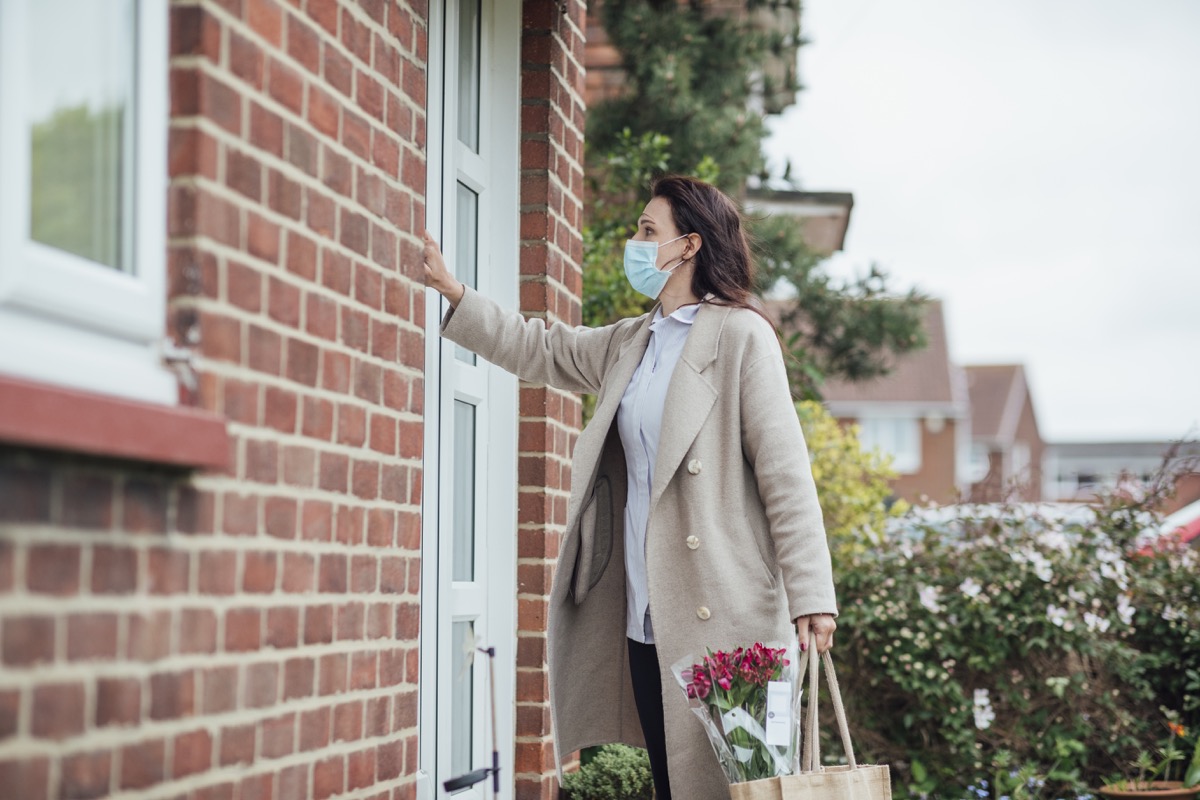“One factor that determines infection is the size of the space—a smaller, enclosed space is the worst,” says Leann Poston, MD, medical advisor for Invigor Health. “A lack of ventilation or poor ventilation is also a factor that increases risk.” Multiple studies have proven that you’re far more likely to catch COVID indoors, including a Japanese study from April that found that the chances of getting the coronavirus in a closed, indoor environment is more than 18 times higher than in an open-air environment. The study noted that all the places with the highest chance of transmitting the coronavirus were places “with minimal ventilation rate.” Because of research like this, the Centers for Disease Control and Prevention (CDC) also says that the lowest risk gatherings, other than a virtual one, are “smaller outdoor and in-person gatherings in which individuals from different households remain spaced at least 6 feet apart, wear masks, do not share objects, and come from the same local area.” But even if you’re having a small outdoor gathering, going inside someone’s house just to use the bathroom is another danger experts are cautioning against. “According to studies, bathrooms and particularly toilets are some of the most contaminated places with COVID-19 particles,” says Dimitar Marinov, MD, an assistant professor working with the control and prevention of infectious diseases. “For example, flushing the toilet is known to create an aerosol which significantly increases the risk of spreading.“ae0fcc31ae342fd3a1346ebb1f342fcb One of the studies Marinov is referencing is research from June that found that around 60 percent of aerosol particles reached high above the toilet seat when flushing—meaning that thousands of particles potentially contaminated with the coronavirus could spray high enough while flushing to be inhaled or land on another surface that someone might touch. RELATED: For more up-to-date information, sign up for our daily newsletter. However, if you are going to enter someone’s house and/or use their bathroom, both Poston and Marinov recommend using the utmost caution and not forgoing any coronavirus safety precautions. For instance, Poston says you should never enter someone’s house without wearing a mask. She also recommends that people consider two other factors: the number of people in the house and the time spent inside. “The more people in a space increases the risk,” Poston explains. “Also, consider how long you spend in that space—longer times increases your chance of infection.” For your reference, the CDC considers anyone who’s less than six feet away from someone with COVID for more than 15 minutes at risk of contracting the virus. And for more risky things you may be doing right now, check out 24 Things You’re Doing Every Day That Put You at COVID Risk.
